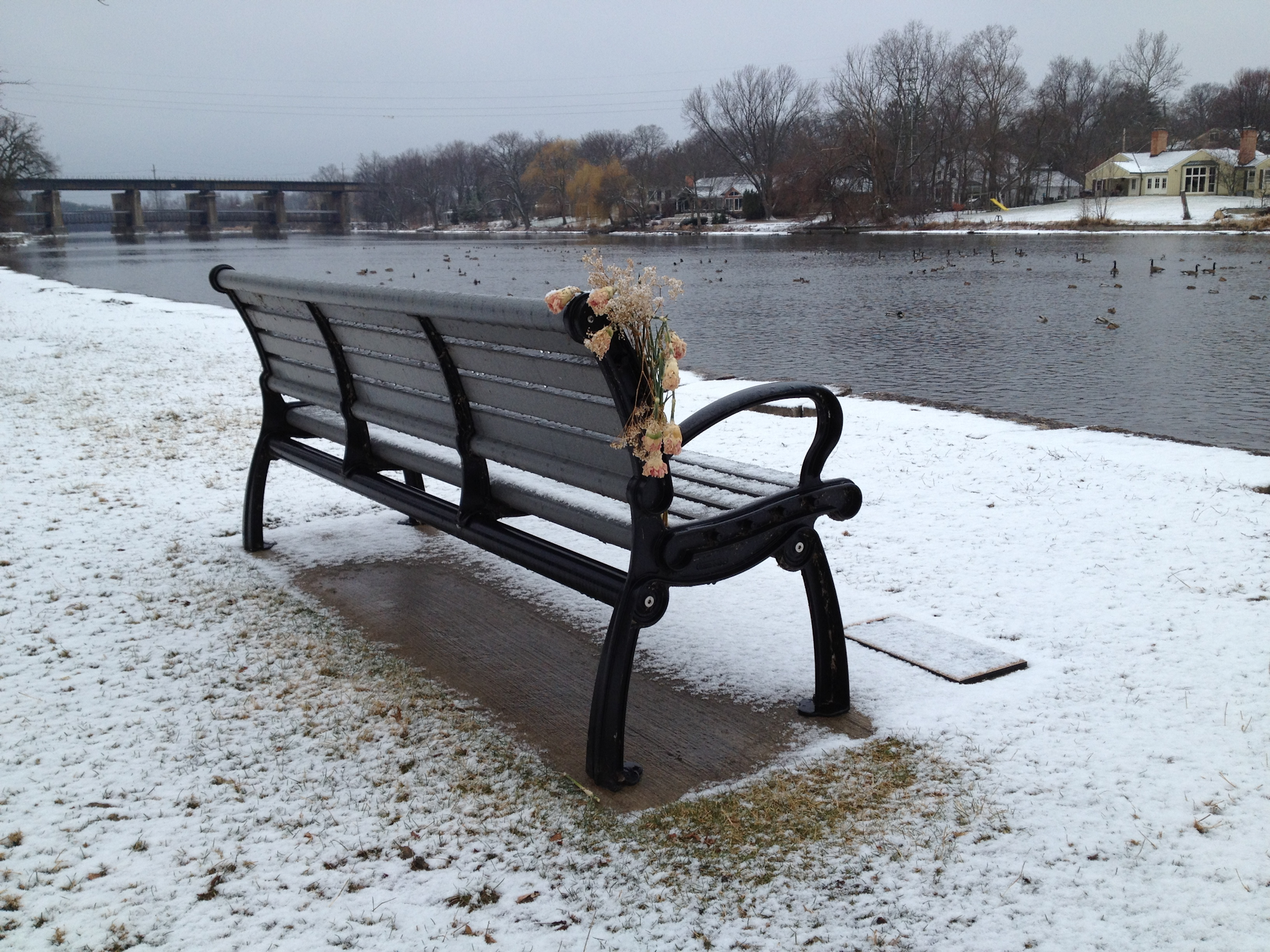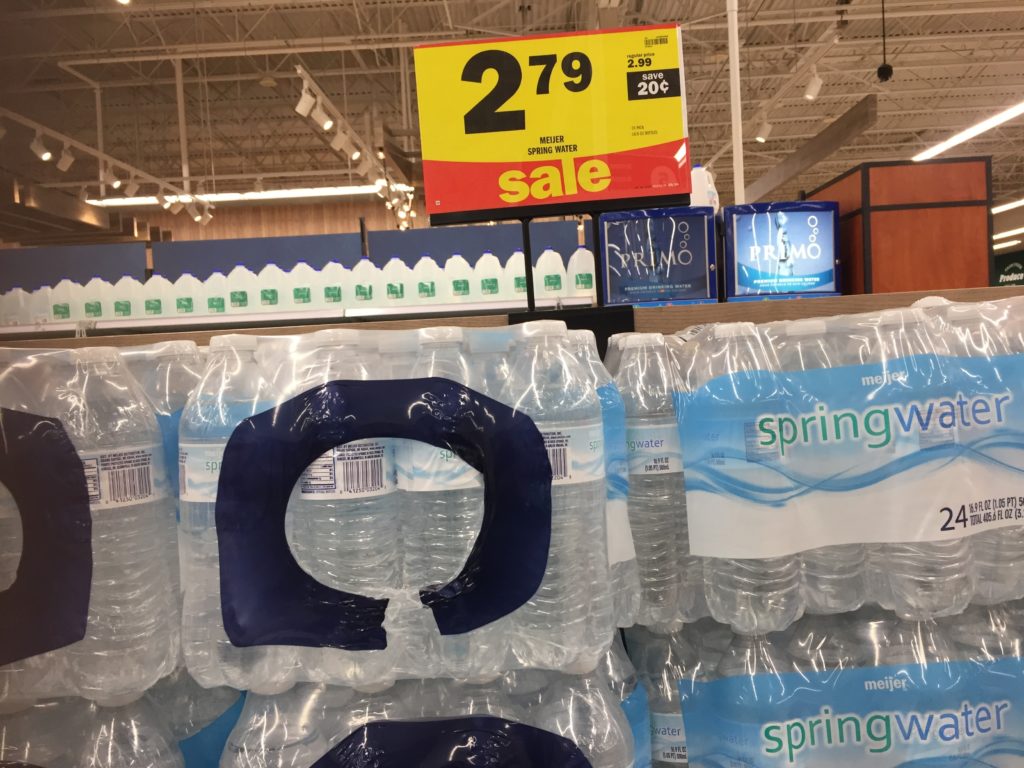
Now that we have our water supply, next on the list is food. The suggestion is to store a 3-day supply of non-perishable food for each person. As I mentioned last week, we have eight people in our family. One is younger than two so the portions for him are probably not going to be the same as for the rest of us who are all adults.
So I did a little research to see what type of food would be best to purchase. Here’s some foods which will last a year or more without spoiling:
- Nuts and peanut butter
- Canned or dried meats and seafood
- Dried grains, fruit, and beans
- Canned or powdered milk
- Protein powders
- Dark chocolate
- Bouillon
- Coffee, tea
- Honey
- Hard cheese in wax
- Canned olives
- Vinegar
- Salt
Another suggestion is to purchase MREs or Meals Ready to Eat.
For our family, we will end up buying some of all the above foods because it is similar to what we already eat. Like the water, we can rotate foods in and out although it will be on more of an annual basis. The challenge for us will be how much to buy. One method would be to look at calories. We could select foods so that each person would get 2,000 calories a day or 6,000 total for the three days. Another family might choose very different foods depending on allergies. The only allergy we need to accommodate is a gluten sensitivity.
To spread out the cost, we are going to purchase the food the same way we are buying the water – a little each week we shop. So starting this week, we will buy one of the food items above in enough quantity to last our family for three days.
Based on the needed calories and the costs here is our food plan:
Peanut butter – My family only likes peanut butter which is natural with no additives. So based on brand availability and cost in my area, the cheapest one to buy is Crazy Richard’s 100% Peanuts which is $3.29 for 16 ounces at Meijer. The jar says 2 tablespoons is a serving (190 calories), and there are 14 servings in a container. That means with seven servings per jar, we could use a jar a day for seven of us if we have one serving a day per person (excluding baby). But to make sure we get enough calories each day I’m going to figure on two servings a day for our family of this food. So we will buy six jars during one of our trips for a total cost of roughly $20.
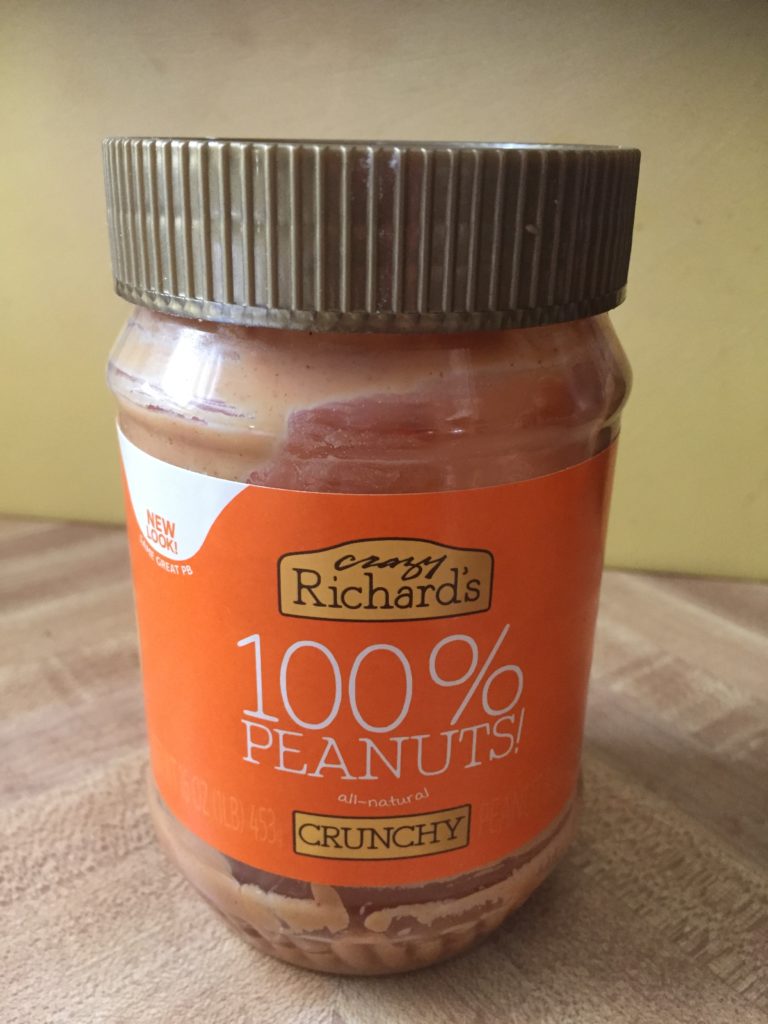
Nuts – While a bag of nuts is probably the most inexpensive choice, I am not sure this is the best storage container. So instead of buying a special container, I am thinking I’ll just spend a little more to get nuts in a better container. The one I am going to buy is Planters Deluxe Mixed Nuts – the 34 ounce size. Planters says on their website, a serving of this is 28 grams (170 calories) so if the container contains 963 grams, there are 34 servings in the container. For three days, this provides 11 servings or more than enough for one a day for everyone, although I doubt the baby would be eating nuts. But to make sure we get enough calories each day I’m going to figure on two servings a day for our family of this food. So like the peanut butter, we will add two containers of these nuts to a shopping trip for a total cost of roughly $40.
Dried Fruit – I have somewhat of the same concern over the container for dried fruit, beans, and grains so may end up buying something to store these. For now, I’m going to buy a 32-ounce bag of Mariani’s Mixed Fruit. The Mariani website shows there are 23 servings per bag with a serving size being a quarter cup (110 calories). That means there is enough in this bag for one serving per person in my family for almost three days. I’ll probably end up buying two of these bags which would give us enough for three days and leave some extra. When they are on sale at Meijer, I can get a bag for $8.49 so that means this will cost a total of almost $17 for the two bags.
Dried meats – not sure a log of pepperoni meets this definition of a dried meat, but since it lasts about a year, we are going to add to our kit one of these. It’s something we usually buy anyway so it can be rotated in and out of the kit with replacements. The particular brand we buy, Bridgford, offers a 16-ounce stick which has 16 servings at 1 ounce each so will provide a serving a day for our family for two days. To make sure we get enough calories each day I’m going to figure on two servings a day for our family of this food. So to have enough for three days, we will buy four of these for the kit. At a cost of $6.99 each at Meijer we will pay almost $28.
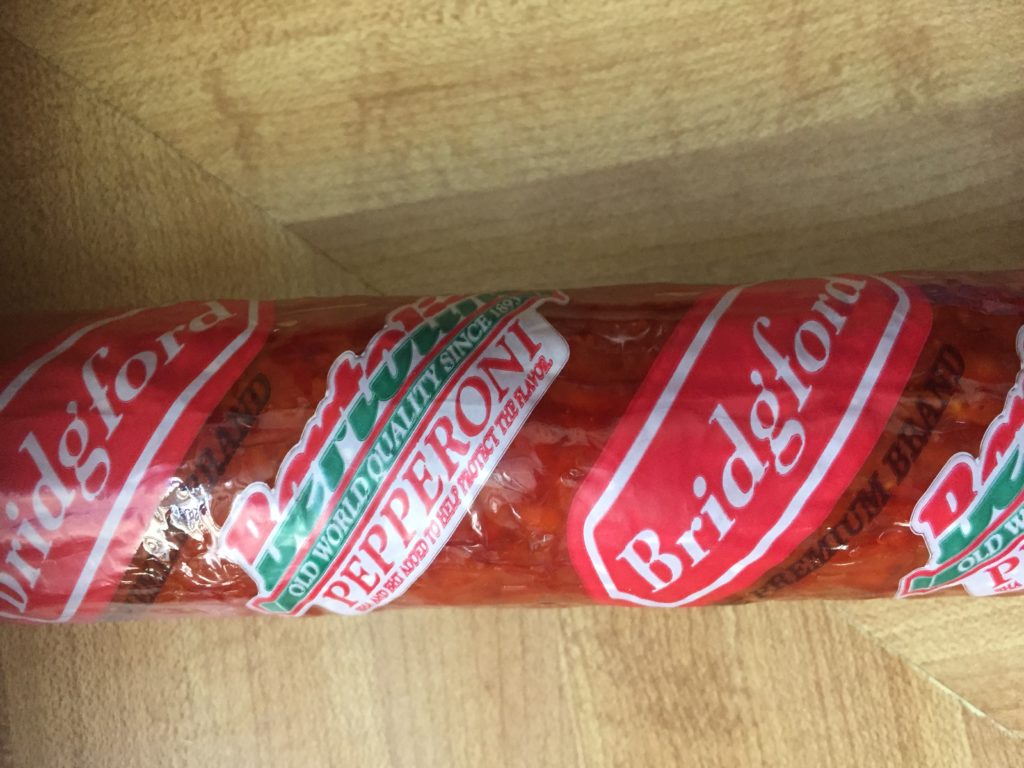
Canned seafood – just our luck this weekend, a family who was moving gave my daughter about 17 cans of tuna with an expiration date in the year 2021. With two servings a container (~45 calories a serving), this means there are 34 servings available, or a four-day supply for our family. Because of this, we won’t need to buy any additional canned seafood at this time.
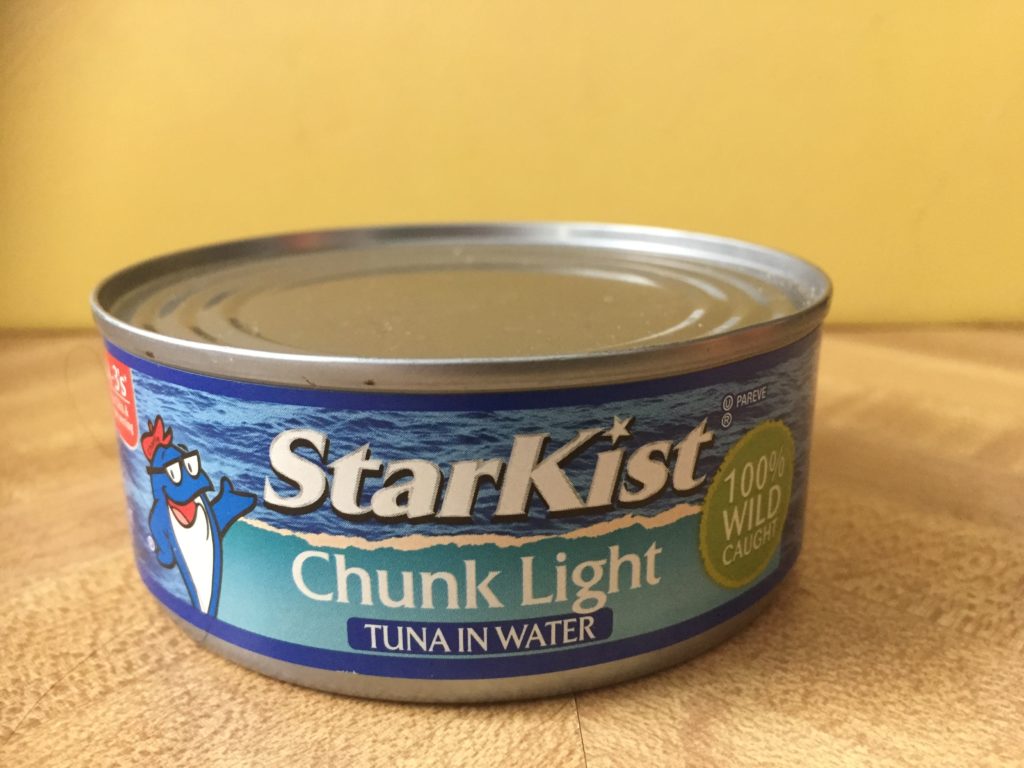
Black Beans – we regularly buy black beans so adding them to the kit allows for another item we can rotate out to keep the items fresh. We buy the Meijer brand in a 15 ounce can which has enough for about 3.5 servings (110 calories each). For our family we would need a little over two cans a day so if we buy nine cans we should have enough. These sometimes go on sale, but if we are paying regular price, it will cost us almost $10.
Protein Powder – because we run and regularly use protein powders for recovery, we already have a favorite brand of protein powder. The one we use is Vitamin Whey Protein which is gluten free. The container we buy has eight servings (320 calories per serving). So for our family for three days, we would need three containers. Like the water, we can rotate these out with the ones we buy for our after run drinks. We usually buy these at Meijer at $19.99 although sometimes they go on sale. If we can’t get it on sale, it will cost us close to $60 so we’ll definitely be on the lookout for sales!
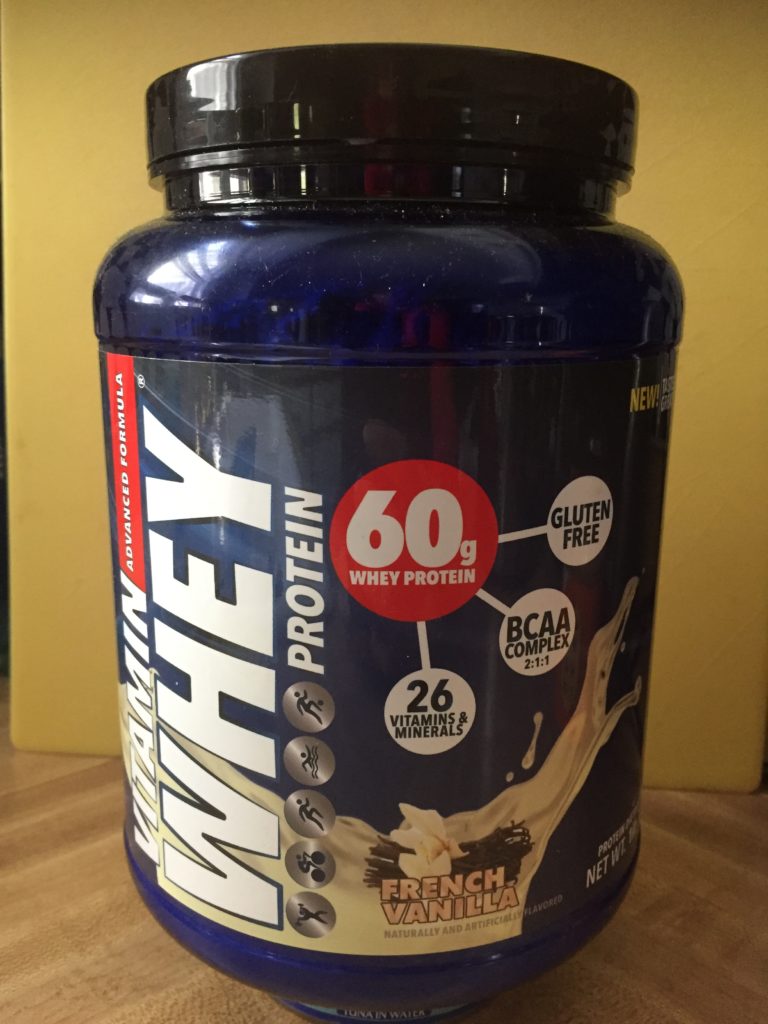
Dark Chocolate – we frequently buy Ghirardelli Intense Dark Sea Salt Chocolate Bar because it is one of the few bars which has been found to not have lead in it. Also, it seems to be gluten free even though it is not marked as such. Each bar is 3.5 ounces and has about 2.5 servings of 38 grams each (190 calories). This means we will need about 3.25 bars a day for our family or almost 10 for all 3 days. We can sometimes buy them on sale at Meijer, but if we pay the regular price of $3.09, then the total extra cost to buy 10 bars will be roughly $30.
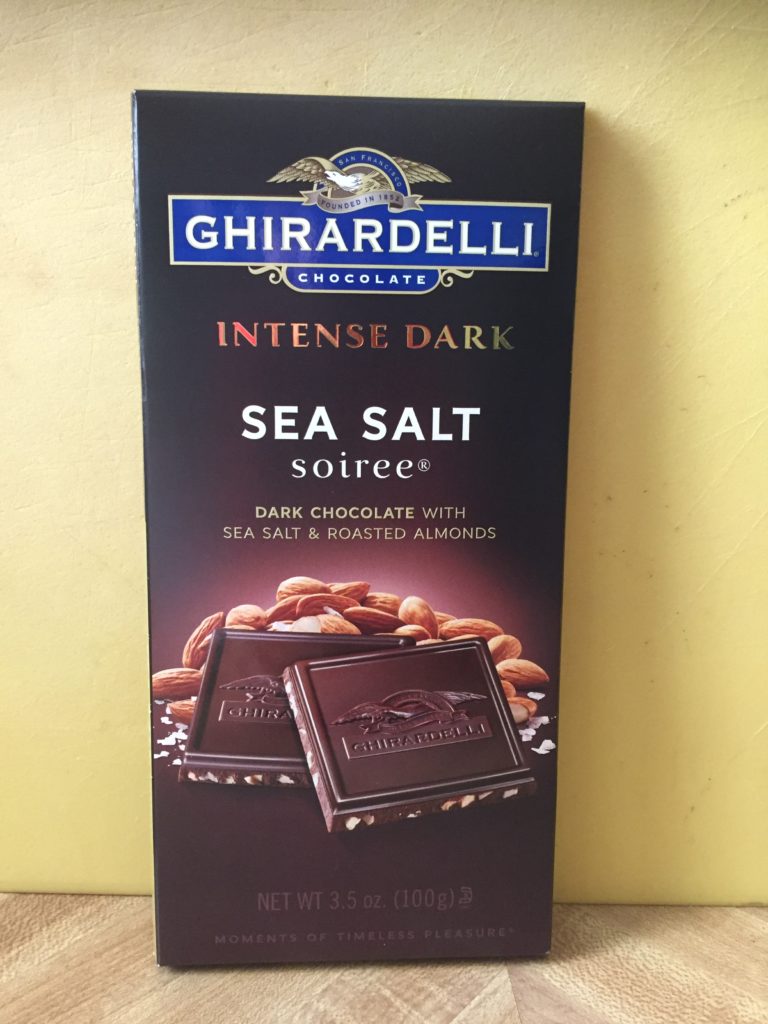
Coffee/Tea – this is one item I am not buying extra of for the kit. We always seem to have a surplus of it, and only two or three of us drink it. I’ll probably just grab one box of tea and one of coffee and put those in the kit.
Honey – for our kit, we’ll probably buy something like Aunt Sue’s Raw Unfiltered Wildflower Honey in a 32 ounce bottle. It has 43 servings at 1 tablespoon each (60 calories) which will last our family the whole three days. One jar of this honey will cost us about $10.
Bouillon – the reason we want to add bouillon to our kit is that it can provide salt and can easily be mixed with water. A jar of cubes from Meijer makes 25 cups or enough for my family for three days of a cup a day. I’m not going to worry about the calories on this one since the amount is insignificant. Buying an extra jar at Meijer will cost about $2.
Olives – our family loves olives so we are definitely adding these to the kit, although at only 25 calories a serving, they really don’t add much to our daily total of calories. We usually buy the Meijer brand in a 13 ounce jar which has about 25 servings or enough for our family for all three days. This will cost us $2.29 to buy an extra jar next time we shop.
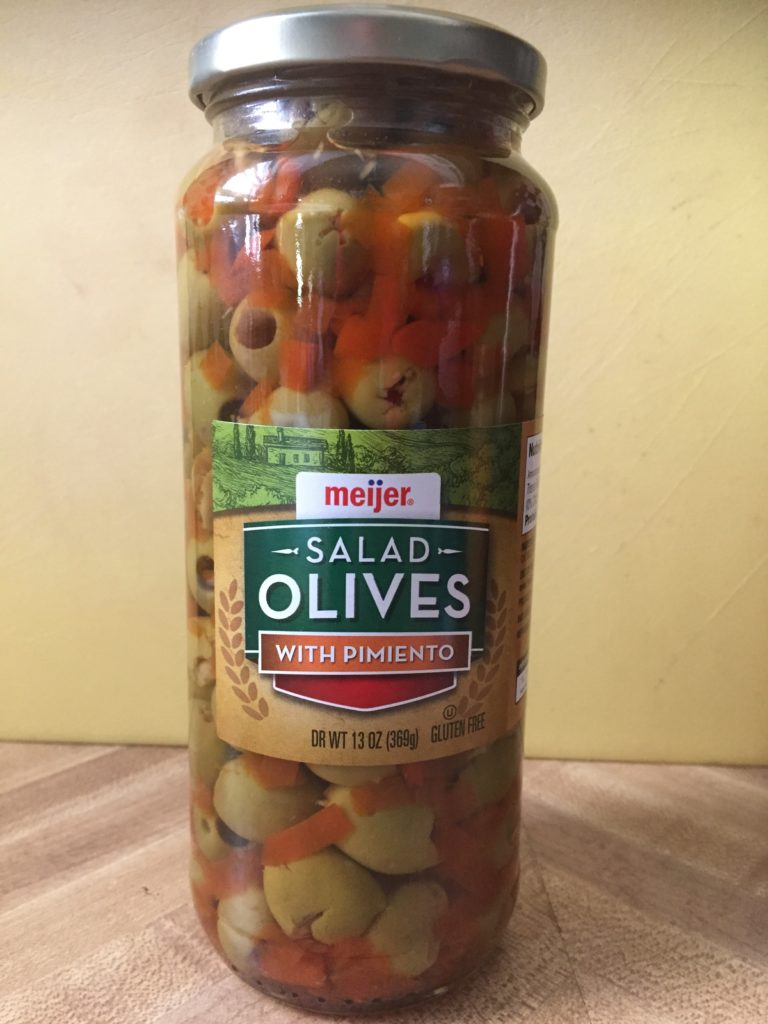
Salt and Vinegar – because these items really don’t provide a meal item, we will just buy one container of vinegar and one of salt. This will probably cost us about $2.50 for a 32-ounce bottle of Heinz apple cider vinegar and about $2.50 for a 26-ounce container of Morton iodized sea salt.
After reviewing all the servings and related calories, so far we would have enough food for all eight of us for three days at a total cost of about $218. Also, I only was able to get the calories up to about 1840, but figured this is probably enough. It’s probably more than most family members eat a day anyway. Below is the table I created to help me track this as I developed my list:
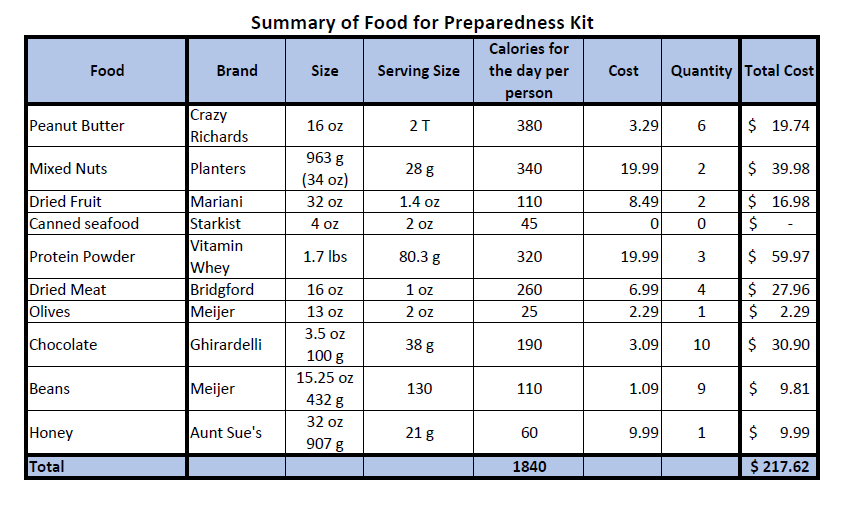
As a side note, throughout this series of posts about getting prepared, I may mention certain products, services, agencies, etc. At no time is it my intention to promote a specific product or service or agency. Each is mentioned only for informational purposes. Of course as a government employee, I do receive a salary from the government for the time I work on my job, but I don’t receive any compensation from any commercial entities I mention or include in these posts.
